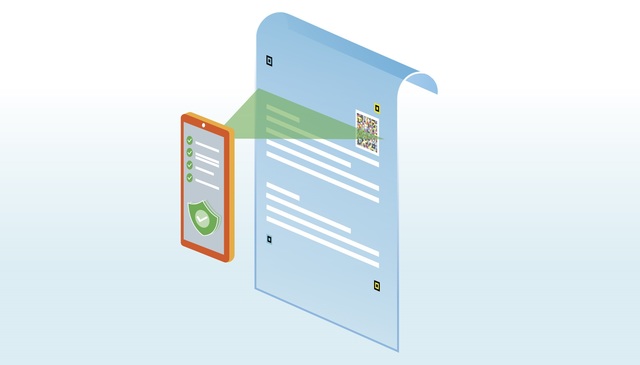Document protection with colorful barcode
October 12, 2022 (PRLEAP.COM) Business News
Simple forgery protection for paper documents and PDFs – automated tamper control via appDarmstadt – The Fraunhofer Institute for Secure Information Technology SIT presents a new solution for protection against document forgery at itsa fair in Nuremberg. The digitized world offers plenty of opportunities for fraud, and every year German companies incur huge losses as a result. With the new DocSeal solution of Fraunhofer SIT, companies and public authorities can quickly and easily provide digital documents and paper documents with forgery protection. For this purpose, a colorful barcode (JAB code) is printed on the document, which records important document contents and their placement in the document in a tamper-proof manner. An app can then be used to check document authenticity and automatically detect tampering. To use DocSeal, one does not need Internet access or a central database. All the necessary information is stored directly in the colorful barcode. The barcode technology is ISO-standardized and open source. The solution was developed within ATHENE research center. For more information, visit www.sit.fraunhofer.de/docseal.
Digitization is opening up ever new opportunities for counterfeiter and IT attackers to forge documents. For example, they change account information on invoices or forge certificates and product passports causing harm to companies. Just recently, the German Patent and Trademark Office warned against false invoices sent to owners of registered trademarks. But also certificates and diplomas are forged to improve the job application situation. The new DocSeal solution developed at Fraunhofer SIT thwarts many of the common manipulation tricks – for paper documents as well as digital PDF files.
How DocSeal works
To protect a document, DocSeal simply uses a JAB code. This is a colorful barcode that can store large amounts of data – much more than conventional black-and-white codes. When generating the colorful barcode, DocSeal integrates important document information, for example invoice amounts, IBAN numbers, serial numbers and proof of manufacture of products or certificate notes. To secure the information, an electronic signature is included, which ensures forgery protection and also clearly proves that the document was really created by the issuing office. To check a document for authenticity, all that remains is to scan the JAB code along with the document. To do this, the Fraunhofer team has developed an app that alerts users in the event of forgeries after a fully automatic check and displays tampered areas on the smartphone screen, highlighted in color. DocSeal works on all conventional smartphones with a camera and with the browsers Firefox, Chrome, Safari and Samsung Internet Browser.
Fast and secure without a database
Unlike many other solutions, DocSeal works completely decentralized and there is no central database required. This gives the users the data sovereignty; in addition, the solution can be integrated into existing processes easily, cost-effective and can also be rolled out quickly worldwide. To ensure successful transfer to practice, Fraunhofer SIT is working with the German Federal Office for Information Security (BSI) to evaluate the use of such a solution for sovereign documents such as residence permits, visas or social security cards. In addition, the Fraunhofer developers are looking for interested partners to test DocSeal in various application scenarios, including those with the highest security requirements.
Further information
DocSeal has been developed within the ATHENE project JASA – JAB Codes for Secure Ad-hoc Documents. The National Research Center for Applied Cybersecurity ATHENE is the largest research center for cybersecurity and privacy protection in Europe.
More info about the colorful barcode JAB Code: www.jabcode.org
More info about DocSeal: www.sit.fraunhofer.de/docseal
Research paper
"Securing physical documents with digital signatures" https://ieeexplore.ieee.org/document/8901807
